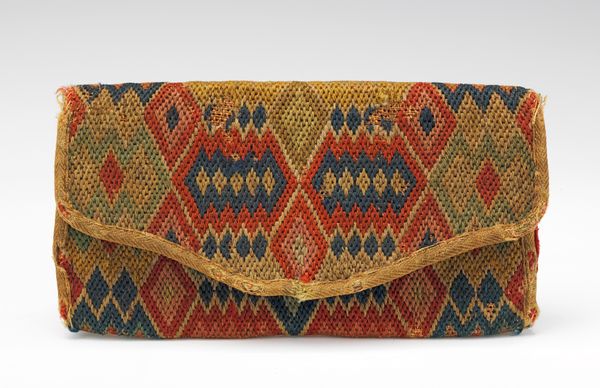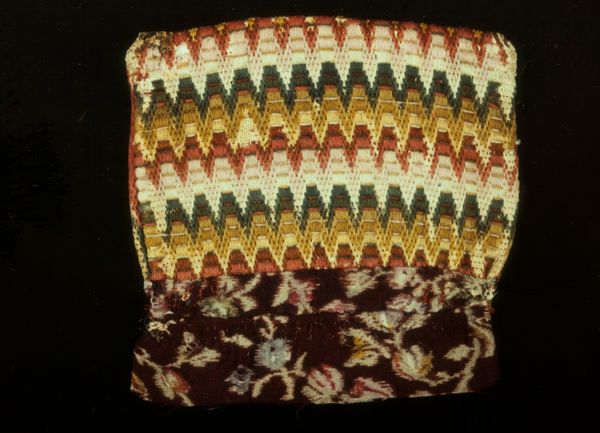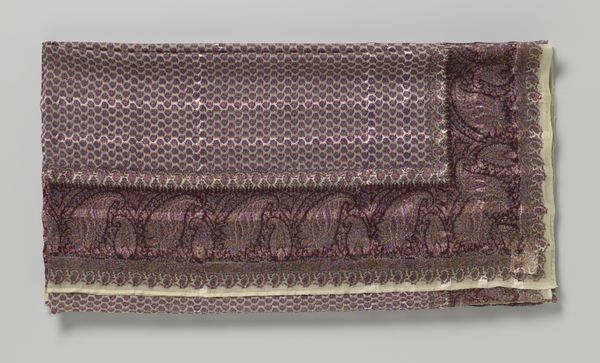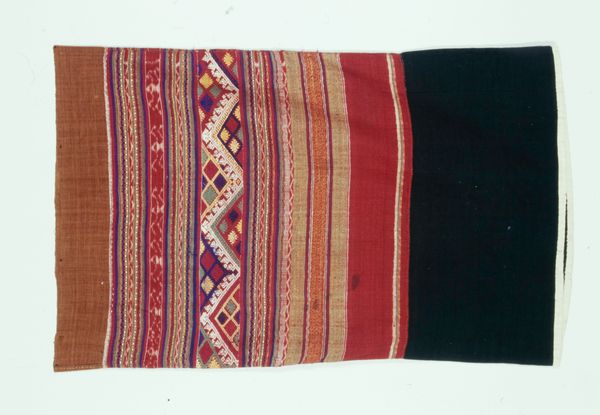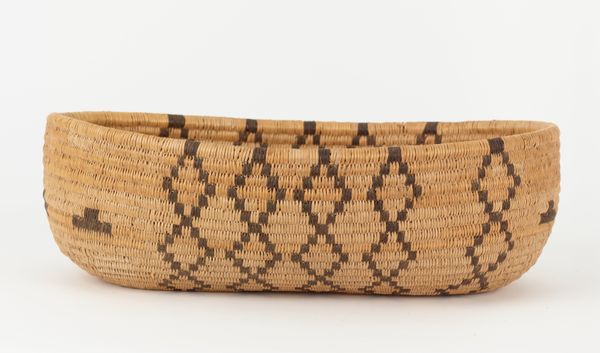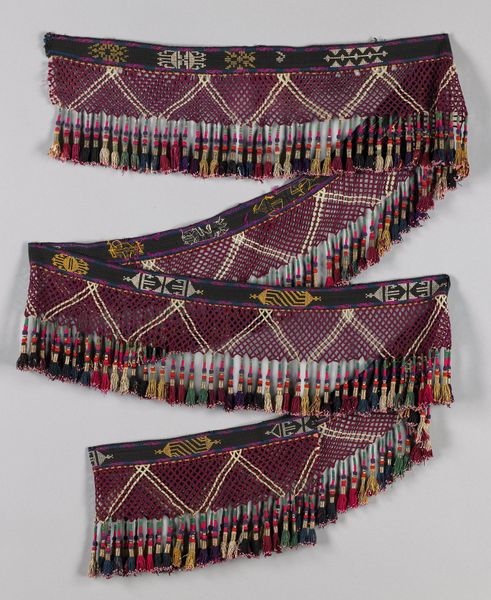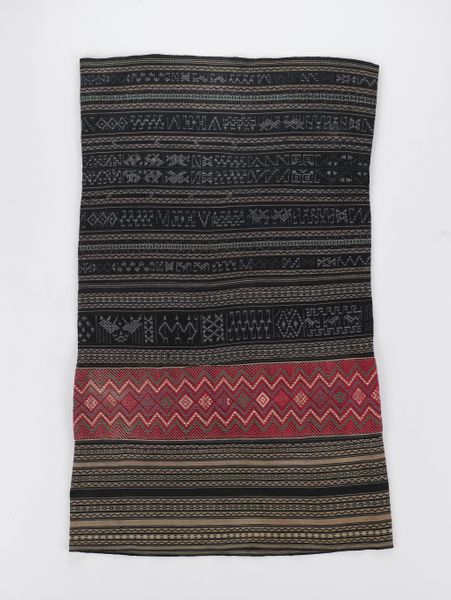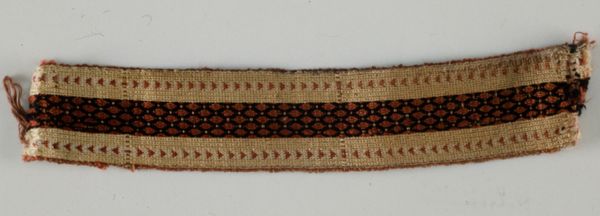
textile
#
textile
#
geometric
Dimensions: 3 3/4 x 6 3/8 in. (9.5 x 16.2 cm)
Copyright: Public Domain
Editor: So, this "Pocketbook" from around 1760, housed here at the Met, appears to be made from textiles and has these cool geometric patterns. It feels almost…homey, like something my grandmother would have made. What do you see in this piece? Curator: The key here isn't necessarily aesthetic beauty, but the context of its creation. Look closely at the textile – each stitch, each color choice. This wasn’t mass-produced. This object is the result of labor, time, and skill, most likely the domestic labor of a woman. Editor: Domestic labor? So, like… sewing as a chore? Curator: More than a chore – it's a form of production. Think about the economic context of the 1760s. Materials would have been precious, sourced through trade or made at home. Each thread represents value, resources, and a deliberate act of creation. Is this "high art" or a craft object? That binary becomes meaningless. The work embodies a real social reality. Editor: That makes a lot of sense. I was just looking at the pattern, the colors, and I wasn’t even thinking about the materials themselves or the person who put it all together. The time that they took makes it feel completely different. Curator: Exactly. Consider also, the 'pocketbook' wasn't merely decorative. It held personal items, representing a woman’s agency and personal property in a time when they had limited legal rights. This changes the very essence of the object itself, wouldn't you agree? Editor: Definitely! I’ll never look at a textile the same way again. Thanks! Curator: My pleasure, consider the means by which all things are made, and what hands created it.
Comments
No comments
Be the first to comment and join the conversation on the ultimate creative platform.
